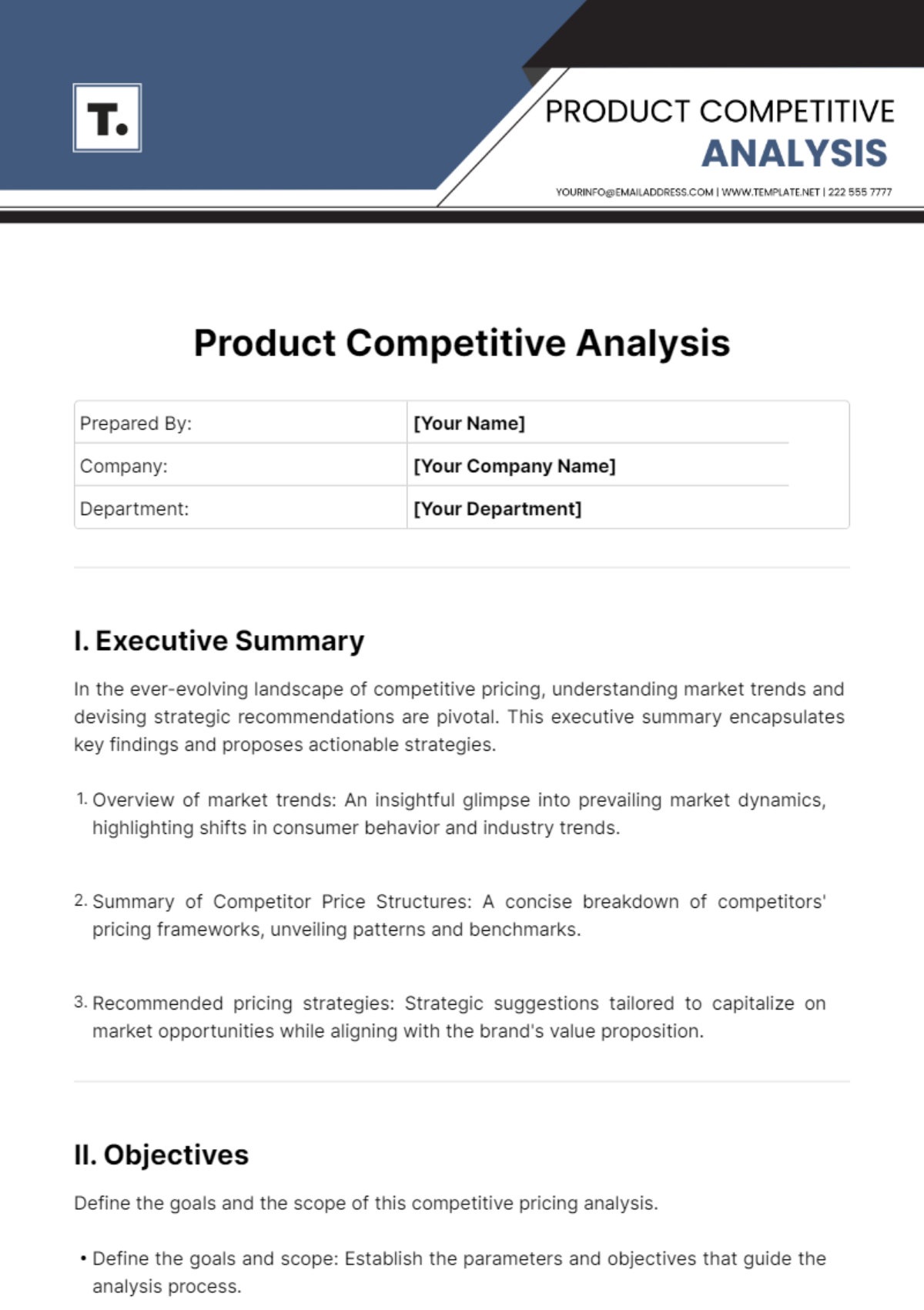Free Product Competitive Analysis
Gain a competitive edge with Template.net's Product Competitive Analysis Template. This editable, customizable template, available in our Ai Editor Tool, helps you analyze competitors comprehensively, informing strategic business decisions.






























